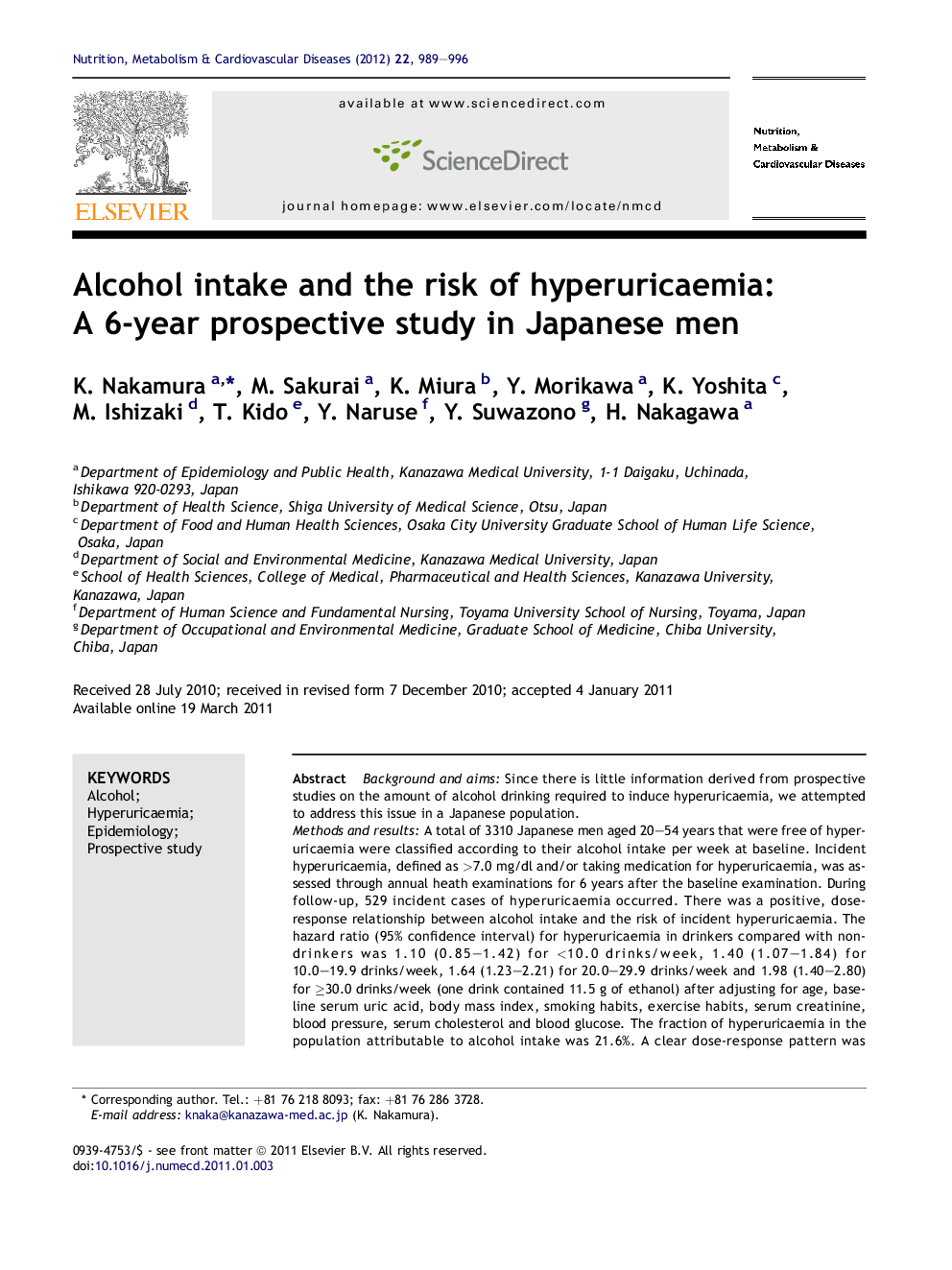| Article ID | Journal | Published Year | Pages | File Type |
|---|---|---|---|---|
| 5996814 | Nutrition, Metabolism and Cardiovascular Diseases | 2012 | 8 Pages |
Background and aimsSince there is little information derived from prospective studies on the amount of alcohol drinking required to induce hyperuricaemia, we attempted to address this issue in a Japanese population.Methods and resultsA total of 3310 Japanese men aged 20-54 years that were free of hyperuricaemia were classified according to their alcohol intake per week at baseline. Incident hyperuricaemia, defined as >7.0 mg/dl and/or taking medication for hyperuricaemia, was assessed through annual heath examinations for 6 years after the baseline examination. During follow-up, 529 incident cases of hyperuricaemia occurred. There was a positive, dose-response relationship between alcohol intake and the risk of incident hyperuricaemia. The hazard ratio (95% confidence interval) for hyperuricaemia in drinkers compared with non-drinkers was 1.10 (0.85-1.42) for <10.0 drinks/week, 1.40 (1.07-1.84) for 10.0-19.9 drinks/week, 1.64 (1.23-2.21) for 20.0-29.9 drinks/week and 1.98 (1.40-2.80) for â¥30.0 drinks/week (one drink contained 11.5 g of ethanol) after adjusting for age, baseline serum uric acid, body mass index, smoking habits, exercise habits, serum creatinine, blood pressure, serum cholesterol and blood glucose. The fraction of hyperuricaemia in the population attributable to alcohol intake was 21.6%. A clear dose-response pattern was observed for both beer and sake, when the consumption of these two beverages was analysed separately.ConclusionHabitual alcohol intake significantly contributed to the development of hyperuricaemia in Japanese men, regardless of type of alcoholic beverage consumed. Therefore, it is essential to reduce excessive alcohol intake to prevent and manage hyperuricaemia.
